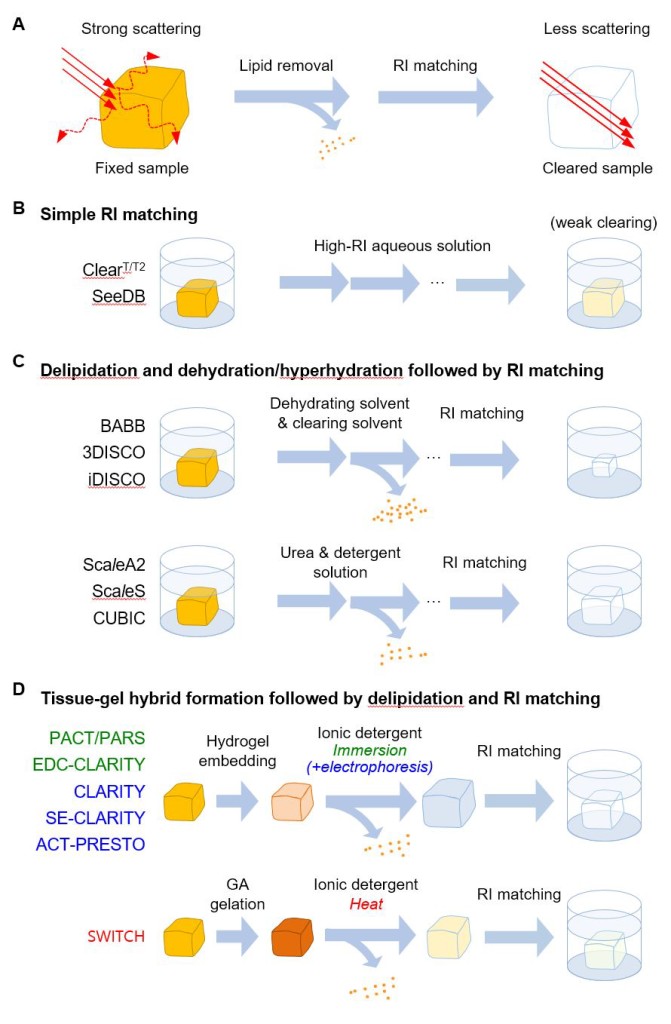Our first paper (a review paper on tissue clearing and labeling techniques) is now online in Molecules and Cells website. A small contribution to the tissue clearing field and to the Korean Society for Molecular and Cellular Biology. Hope you find this review useful and cite when discussing tissue clearing/labeling! And great job, Jinyoung and Minjin!

Fig. 1. Tissue clearing techniques. (A) Light scattering in biological tissues can be reduced by removal of lipid and RI matching. (B) Simple immersion in a high-RI aqueous solution renders the tissue modestly transparent by homogenizing scattering throughout the sample. (C) Delipidation and dehydration / hyperhydration followed by refractive index matching. (Top) For solvent-based clearing, the tissue is incubated in dehydrating solvent for delipidation and dehydration, and is moved to a high-RI clearing solvent where RI matching and additional delipidation occur. (Bottom) The sample is placed in an aqueous solution that contains high concentration of non-ionic detergent and denaturant, where delipidation, hyperhydration, and RI matching take place. (D) A biological sample is first transformed into a tissue-gel hybrid by hydrogel embedding (Top) or glutaraldehyde fixation (Bottom), where the gel network increases the tissue integrity. The tissue-gel hybrid then can withstand extensive delipidation by incubation in ionic detergent (SDS) assisted by electrophoresis or heating.